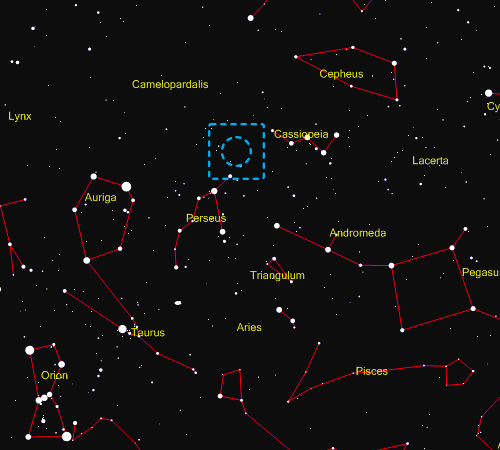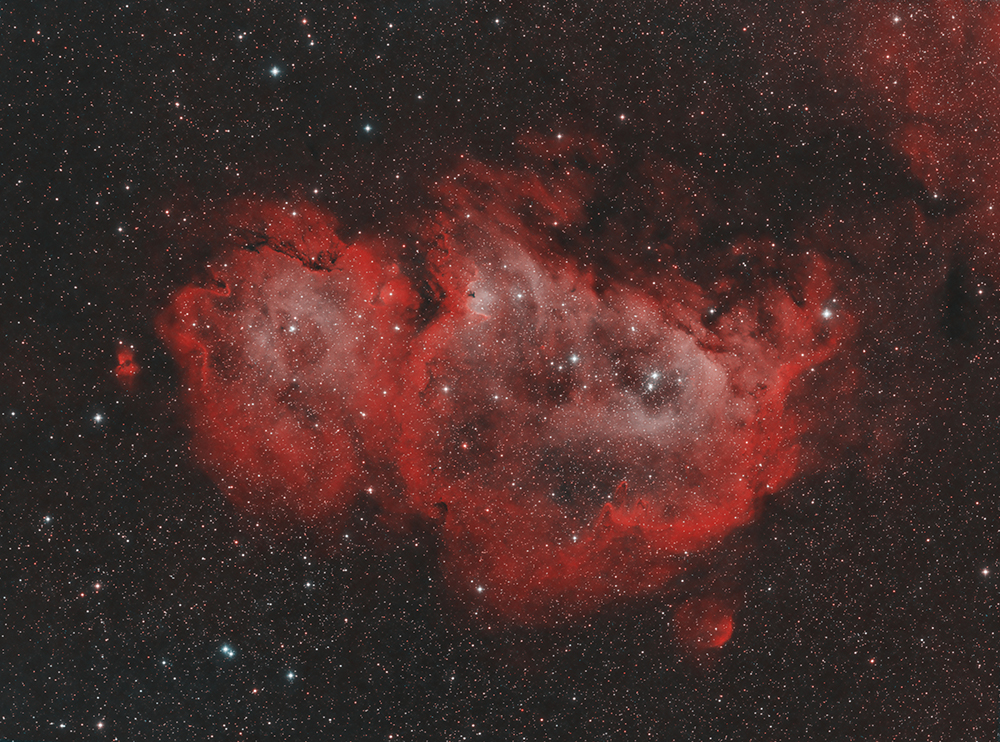NAME:
CATALOGUE:
OBJECT TYPE:
CONSTELLATION:
DISTANCE:
APPARENT MAGNITUDE:
APPARENT SIZE:
DIAMETER:
DISCOVERY:
BEST VIEWED IN:
RIGHT ASCENSION:
DECLINATION:
TELESCOPE:
DATA GATHERED:
EXPOSURES:
TOTAL TIME: |
|
The Soul Nebula
IC 1848 / Sh2-199
Emission Nebula
Cassiopeia
7,500 light years
18.3
120 x 75 arcminutes
260 light years
c.1888, Edward Barnard
November
02h 54m 40s
+60º 26’ 05”
William Optics Star 71
9 nights, October & November 2015
and January 2016
Hα = 18 x 1800s
OIII = 13 x 1800s
15 hours 30 minutes |


